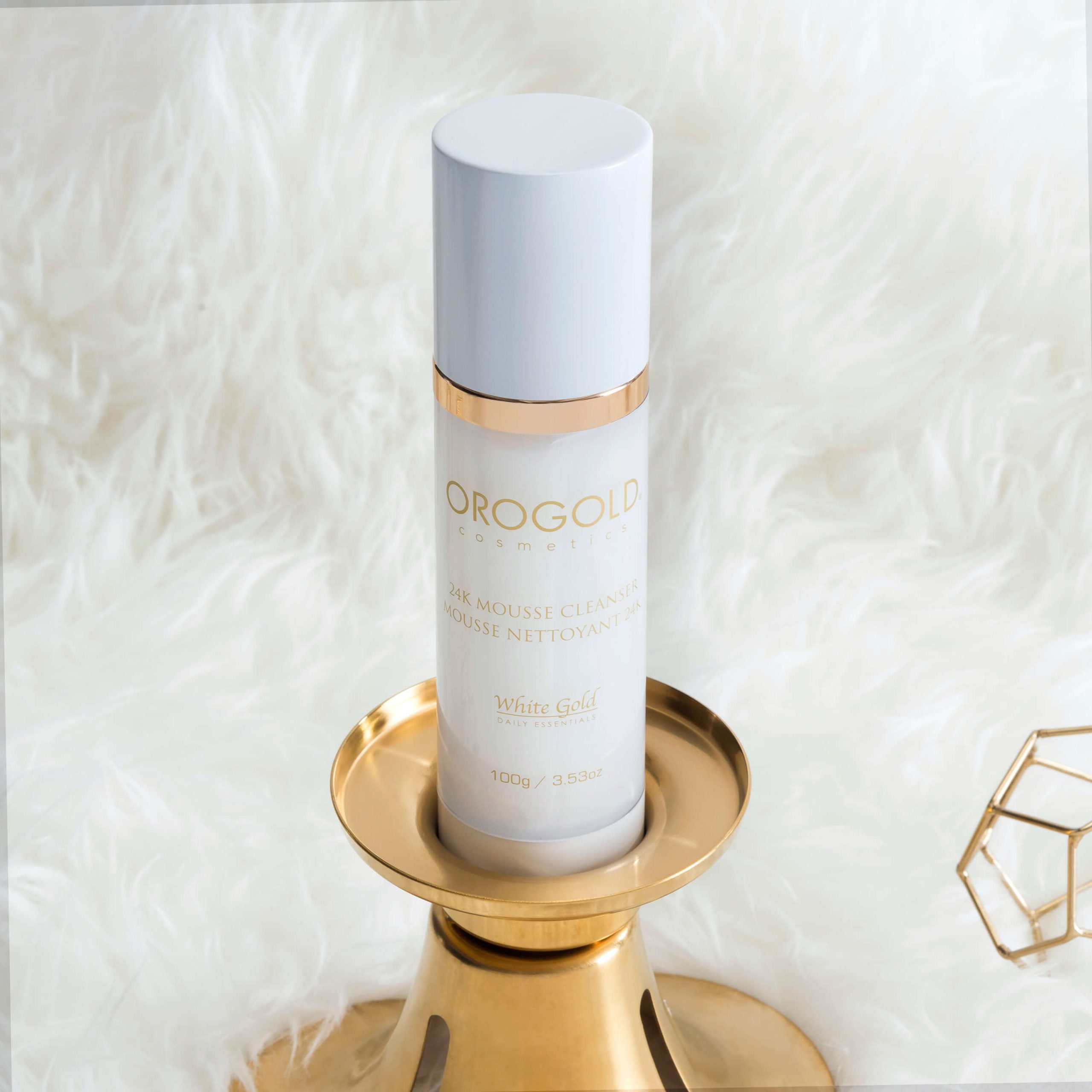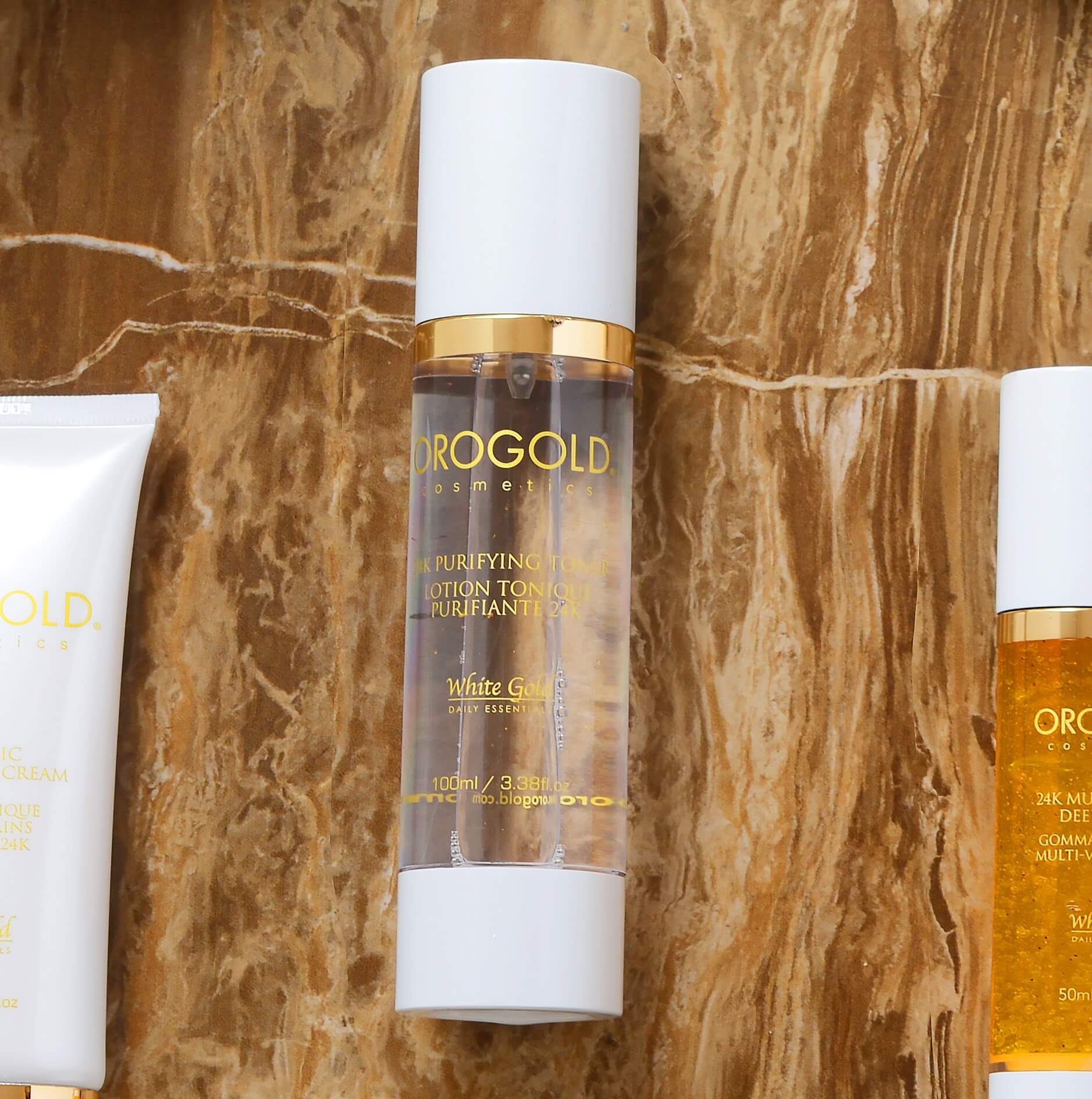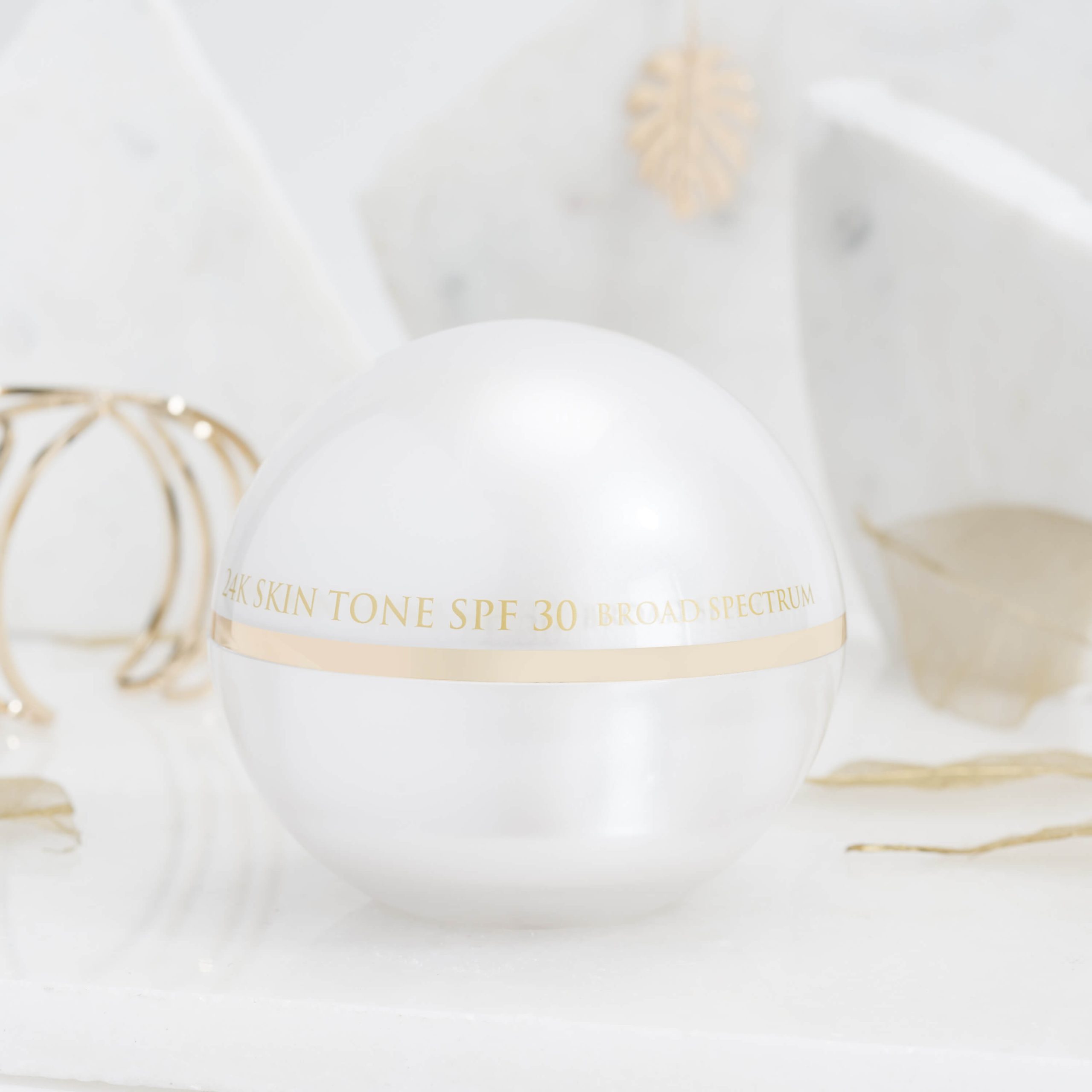The Truth About Slugging

If you’ve been keeping an eye on skincare trends, slugging is a technique that you’ll have likely come across by now. However, while there may be a number of slugging fans out there, there are also plenty of people who have tried it once and would never do so again!
So, what’s the truth when it comes to slugging and your skin? Is this a process that actually benefits the skin or is it a trend that you should avoid at all costs? Keep reading as OROGOLD explains!
What is Slugging?
Let’s start from the very beginning – what exactly is slugging and how does it work?
At its most basic, slugging is the act of coating your skin with a highly occlusive agent, such as petroleum jelly, and allowing that to remain on your skin overnight. The way in which it leaves the skin looking ultra-shiny and slimy is what gives this trend its name – it will look as though a slug has crawled across your face and left its greasy trail behind!
While that may not sound very appealing, this technique, which originated in the K-beauty world, has a purpose. The idea behind it is to create a protective physical barrier over your skin’s surface. Rather than your skin absorbing the occlusive substance, it sits atop your skin and acts as a shield, ensuring that nothing is able to move in or out of your skin.
The Benefits of Slugging
So, why are so many people raving about slugging?
It all comes down to how that occlusive shield can make a world of difference to your skin barrier. It essentially functions as an additional barrier, but one that’s even thicker and stronger than your natural one.
As a result, slugging can significantly boost skin hydration levels. It blocks the air around you from sucking moisture out of your skin, preventing transepidermal water loss (TEWL). With TEWL usually increasing at night, this can be a game-changer for those who often wake up with dry skin.
The way in which slugging mimics skin barrier function also helps to give your own natural barrier a break. Rather than focusing so much on defense, it can turn its attention to repair. If your skin barrier has experienced any damage lately, slugging could be a good solution to rectify this.
The Downsides of Slugging
So far, slugging sounds pretty good, right? However, it’s not for everyone…
As you may have guessed, those with oily, acne-prone skin may experience an increase in breakouts after slugging, although not for the reasons that you may think. Although petroleum jelly, which is the ingredient most commonly used for slugging, may feel like a very thick and greasy substance, its molecules are too large to penetrate the skin and enter into the pores. Therefore, the petroleum jelly itself won’t be the direct cause of your clogged pores. However, it will prevent your skin’s sebum from being able to escape onto your skin’s surface. This sebum will then end up stuck in your pores, causing blockages and breakouts.
You also need to be very careful about the skincare products that you apply before you lock everything in with an occlusive agent. Trapping certain ingredients into your skin to such an extent could cause them to act unpredictably.
What Do Dermatologists Say?
Of course, it’s never a good idea to completely rely on viral trends for your skincare knowledge. So, what do dermatologists think about the slugging craze?
Generally, they love it. In fact, using an occlusive agent to form an additional barrier over the skin is a technique that they’ve been using for a long while now for various purposes – it just didn’t have a trendy name!
Slugging is a technique that dermatologists commonly recommend to those with dry or damaged skin, so long as it’s carried out in the correct way…
Want to Give Slugging a Try? Here’s How
Ready to give slugging a try? Here’s how:
Begin by Cleansing Your Skin

The last thing that you want to do is place an occlusive layer over dirty skin. As you can imagine, this will only push all of those impurities deeper into your skin, where they’ll cause damage on a multitude of levels. Cleansing is important before you do anything to do your skin, but even more so if slugging is the plan!
With that said, pre-slugging skincare should be as gentle as possible. Make sure that your cleanser falls in line with this by picking a moisturizing formula, like the OROGOLD 24K Mousse Cleanser. Its conditioning agents will leave your skin feeling beautifully clean and fresh yet without a touch of irritation.
Apply One or Two Gentle, Hydrating Skincare Products

You don’t want to go overboard with the skincare products that you apply pre-slugging. It’s best to keep things minimal so as to prevent clogged pores and issues with certain ingredients.
However, there’s also no ignoring the fact that slugging can be beneficial when it comes to hydrating ingredients. The way in which it seals them into your skin, pushing them further in, can make them work even more efficiently.
While slugging itself will help with hydration, you could ramp this up further by applying one or two lightweight yet hydrating products to your skin before you start slugging. The OROGOLD 24K Purifying Toner, which features a minimal ingredient list, would be a good one to try. Not only does it hydrate but it also soothes the feeling of inflammation while treating your skin to an array of antioxidants.
The OROGOLD 24K Termica Activation Serum would be another good choice. Thanks to sodium hyaluronate, seaweed extract, and collagen, it’s extremely hydrating. It also contains a few barrier-loving ingredients, including ceramides and peptides. If you’re slugging for the sake of your skin barrier, this serum will accelerate your visible progress.
Slug Away!
Now that your skin has been prepped, it’s time to start slugging! First, choose the product that you plan on slugging with. Research shows that petrolatum is the most effective occlusive available, so find a product that’s heavy in this ingredient.
Then, while your skin is still damp from the previous skincare product that you applied, spread a pea-sized amount of your chosen product over your face. You don’t need to apply it thickly – a thin layer is much more beneficial. Then, head to bed (yes, you may want to swap out your expensive silk pillowcases for some cheaper alternatives when you’re slugging as grease stains!), before cleansing your skin in the morning. Make sure that you do this thoroughly as you don’t want any grease lingering on your skin.
Short-Contact Slugging
While slugging tends to be most beneficial when done overnight, short-contact slugging is also becoming increasingly popular. This is when you slug for just a few hours, rather than all night.
The process for this is exactly the same. However, instead of going to bed once you’ve applied your occlusive layer, you would go about your usual activities. Ideally, time this for a few hours before your evening skincare routine. This way, you can wash that occlusive layer off during your evening cleanse before carrying on with the rest of your routine.
How Often Should You Slug?
Your skin type and its needs should determine how often you slug. The drier your skin, the better it will be able to handle a higher frequency.
Usually, for dry or damaged skin, slugging three or four times a week is sufficient. If your skin barrier is severely damaged, you may want to try it every night until you see some improvements in your complexion.
The time of year will make a difference too. Moisture loss tends to soar in the winter months, so this is when slugging is most useful. In the summer, TEWL is naturally lower and your skin produces more of its own moisturizing oils. This means that slugging is more likely to clog pores and trigger breakouts.
Either way, if you notice any side effects from your slugging efforts, it’s time to either cut back or stop completely. If you’re unsure, speak to your dermatologist for advice. As we said, slugging is a trend that dermatologists tend to champion so they’ll be able to help you decide what would be best for your skin.
Extra Slugging Tips to Keep in Mind
Want to perfect your slugging technique? Here are a few tips to keep in mind:
Avoid Applying Powerful Ingredients Pre-Slugging
One important tip to keep in mind is to never apply potent active ingredients underneath your occlusive layer. Ingredients like retinoids or acids should definitely be avoided. Why? Because trapping these powerful actives into your skin will likely lead to irritation.
Don’t Slug If You’re Sunburnt

You should also steer clear of slugging if your skin is sunburnt. While this may seem like an easy way to soothe sunburnt skin, it can often intensify the burning sensation while prolonging your skin’s healing time. With sunburns drastically increasing your risks of developing certain skin cancers, this is something to avoid at all costs anyway, so make sure that you have a good go-to sunscreen!
Don’t Restrict Yourself to Your Face
While most of the slugging posts that you see on social media show satisfyingly slimy faces, slugging is a technique that works well on the body too. From your neck and chest to your stomach, back, and legs, it can be used to target dry and dehydrated skin from head to toe. It works well on the lips too – an area where the skin is much thinner.
Our Final Verdict on the Slugging Trend
It’s clear that there are a number of benefits that slugging can provide, especially if your skin is severely dry or damaged. With that said, just like all skincare trends and techniques, it’s not for everyone. If your skin is excessively oily, you may want to give this one a miss but, for everyone else, it’s an effective way to boost your skin’s moisture content, making slugging well worth trying.
Click here to upgrade your skincare routine with more of OROGOLD’s bestselling products.




 A.U.
A.U. B.R.
B.R. C.A.
C.A. E.S.
E.S. H.K.
H.K. M.X.
M.X. N.L.
N.L. P.R.
P.R. S.G.
S.G. T.W.
T.W. U.K.
U.K. S.A.
S.A.


